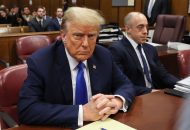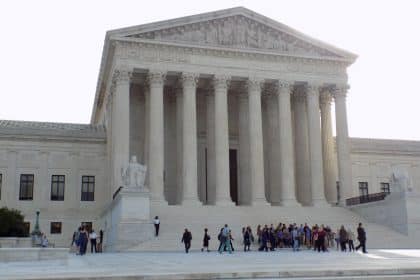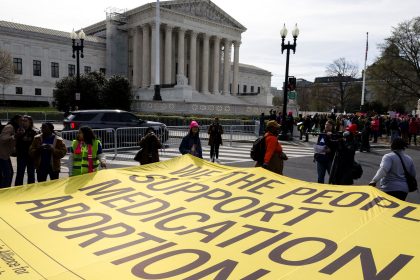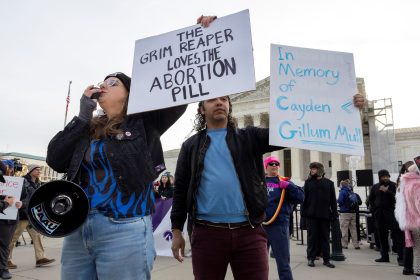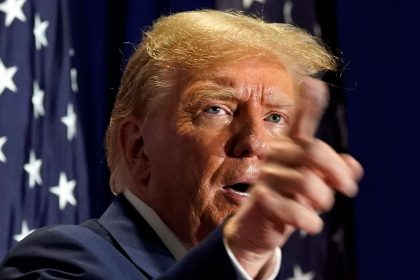Supreme Court Seeks Solicitor General Input on Biologic Drug Patents
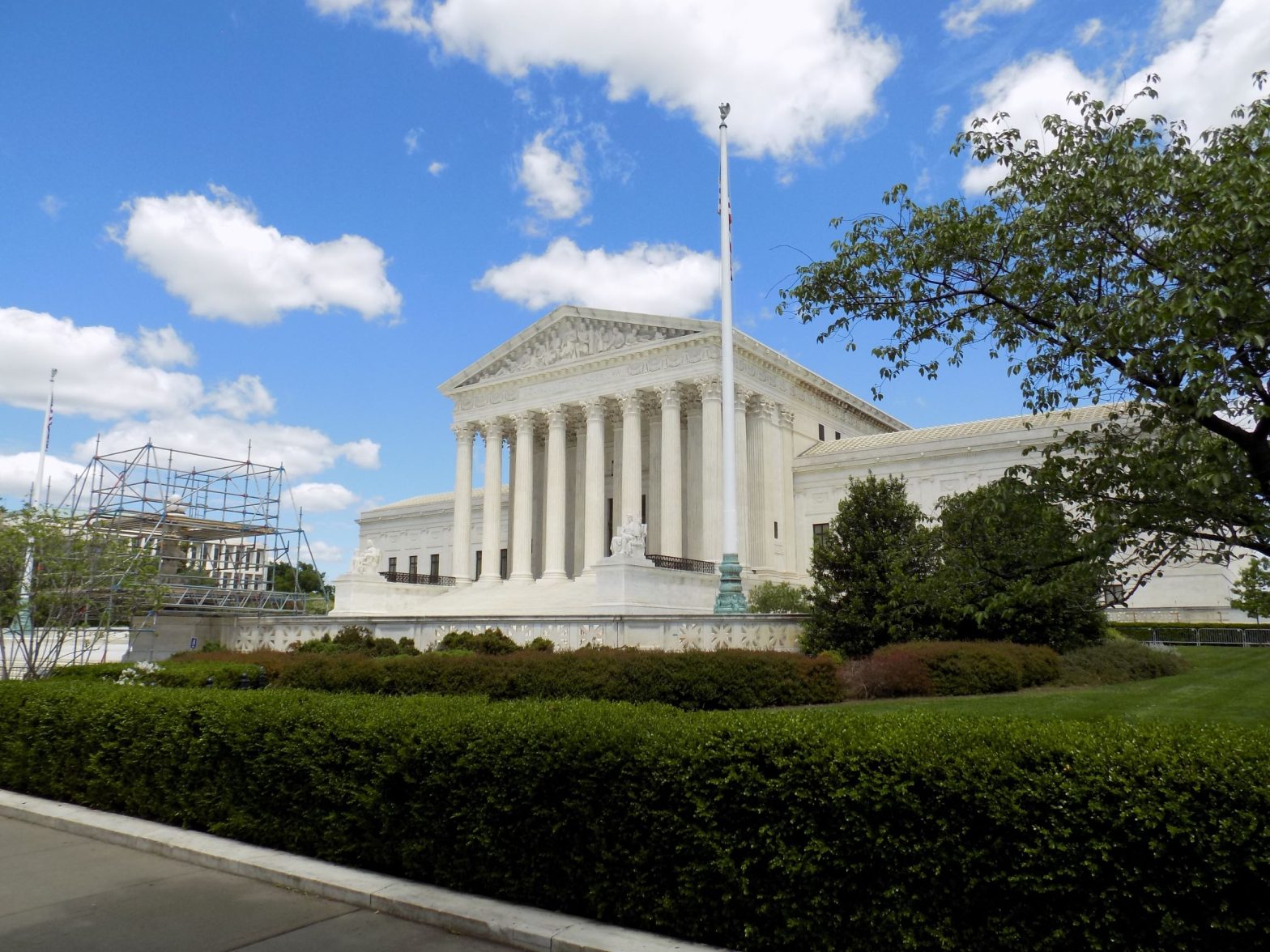
WASHINGTON — The U.S. Supreme Court on Monday asked Solicitor General Elizabeth Prelogar to weigh in on a drug patent case the outcome of which could ultimately be worth billions of dollars.
The case, Amgen v. Sanofi, emanates from the U.S. District Court for the Federal Circuit, and involves Amgen Inc.’s patented invention — monoclonal antibodies that can be used to dramatically reduce the levels of “bad” cholesterol in an individual.
In their petition for certiorari, attorneys for Amgen describe the company’s invention as nothing less than a medical “breakthrough.”
The 26 antibodies identified by Amgen lower bad cholesterol by binding with a protein, identified as PCSK9.
In underlying lawsuits, jurors have twice found that Sanofi and Regeneron infringed on Amgen’s patents.
But U.S. District Judge Richard Andrews threw out the second verdict, finding that the framework Amgen laid out in its patent documents could potentially lead to millions of antibodies that could not be screened without undue experimentation.
While the arguments in the current case can be highly technical and difficult to explain in lay terms, they all revolve around the legal concept of “enablement,” a patent law requirement that an applicant disclose a claimed invention in sufficient detail so that the person “skilled in the art” could carry out that claimed invention.
From there the case essentially boils down to the scope of patent protection Amgen is seeking and whether the court believes the drugmaker has disclosed enough in its patent filing to warrant such wide protection.
At the same time, Amgen is questioning just how far Section 112 of the Patent Act requires a drug maker to go in its filing and whether it requires that patents enable “persons of skill in the art” to identify and make “all” of the embodiments of an invention without undue experimentation.
Amgen claims that for at least a decade the Federal Circuit has been straying from legal precedent and has been creating “new and ever-mutating tests while deciding successive cases involving the patents for prescription drugs and therapies.”
And it maintains the Federal Circuit has applied precisely this kind of “recent court-made hurdle” in this case.
“For ‘genus’ claims like Amgen’s, the Federal Circuit ruled, it is not enough that the patent meets the statutory requirement that it teach skilled artisans to ‘make and use’ the invention,” the petition for certiorari says. “Instead, the Federal Circuit requires that the specification allow skilled artisans ‘to reach the full scope of claimed embodiments’ — i.e., to cumulatively identify and make all or nearly all possible variations of the invention — without ‘substantial time and effort.’”
Amgen maintains that position creates staggering uncertainty for the pharmaceutical industry and defies “more than a century of [Supreme Court] precedents.”
Further, it maintains, the standard it is being held to is simply wrong.
“The Federal Circuit identified no reason why patent validity should depend on the cumulative effort required to ferret out every conceivable implementation of the invention,” it said in its brief. “That test defies this Court’s precedents, which recognize that ‘it is obviously impossible to specify in a patent the precise treatment’ for each of the potentially ‘infinite’ variations of a claimed invention.
“The impact on innovation is devastating, particularly for critical biotech and pharmaceutical innovations, as the Federal Circuit invalidates genus claims based on perceived size alone,” Amgen added.
Because of the breadth of Amgen’s argument, a review of the case by the Supreme Court could have sweeping implications for a wide range of companies who have had their patent cases heard by the Federal Circuit over the years.
In the meantime, the Federal Circuit’s denial of rehearing en banc leaves its decision in Amgen v. Sanofi in place.
In its denial of an en banc reconsideration of the case, the Federal Circuit said, “Amgen argues that we have created a new test for enablement. That is incorrect. It has always been, or at least has been since the Patent Act of 1870, that a patent applicant must enable one’s invention, whatever the invention is.
“A composition of matter, whether a chemical compound or biological material, accordingly, must be enabled, as must other types of inventions,” it said.
The ruling went on to explain, “If the invention is a group of compositions, defined as a genus, that group is enabled by a disclosure commensurate with the scope of the genus.
“For years, before biological materials were often claimed, chemical genus claims were enabled by actual or constructive (often called prophetic) examples,” the ruling continued. “Chemical patent specifications were filled with examples of compounds that had been prepared, generally shown by use of the past tense to describe the procedures, with melting points or other physical constants obtained by actual reductions to practice. Constructive examples were described in the present tense, with starting materials and process details resulting in named compounds within the scope of the claims.
“Whether actual or constructive, those examples enabled the full scope of the claims. Such well supported generic claims do not lack for enablement, or written description,” the court said. “Amici and others bemoaning the so called death of generic claims are therefore off-base.
“Genus claims, to any type of invention, when properly supported, are alive and well. What is new today is not the law, but generic claims to biological materials that are not fully enabled,” it said.
In their notice that it had reached out to the Solicitor General, the justices of the Supreme Court said only that Prelogar’s office “is invited to file a brief in this case expressing the views of the United States.”
Mark A. Lemley, the director of the Law, Science, and Technology program at Stanford Law School has filed a brief in the case on behalf of a party identified collectively as “Intellectual Property Professors.”
He and his colleagues have also written a paper about the issue at the heart of the case that can be downloaded here.
In an email to The Well News, he said the Supreme Court’s call for the views of the solicitor general is a “normal first step” in patent cases, “suggesting the court is interested in taking the case but wants further guidance.”
“If the court takes the case it will be important, both for the pharma and biotech industries and for the development of patent law,” Lemley said. “The federal circuit has changed its law in the last 20 years to make it virtually impossible for pharma and biotech companies to patent groups of chemicals (so-called “genus claims”). That is a real problem for the industry, because it means that a competitor can make a similar drug without infringing a patent,” he said, adding, “The federal circuit has refused to reconsider its position, which means that the Supreme Court is the last resort for patent owners.”
Dan can be reached at [email protected] and at https://twitter.com/DanMcCue.
This story was updated to include the comments of Stanford Law Professor Mark A. Lemley.











